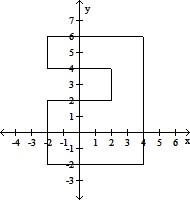Solve the problem.The number of mosquitoes M(x), in millions, in a certain area depends on the June rainfall x, in inches:  What rainfall produces the maximum number of mosquitoes?
What rainfall produces the maximum number of mosquitoes?
A. 36 in.
B. 3 in.
C. 6 in.
D. 0 in.
Answer: B
You might also like to view...
Find the coordinates of the centroid (to the nearest 0.01 in.) of the uniform flat-plate machine part shown.
A. (1.33 in., 3.00 in.) B. (1.60 in., 2.00 in.) C. (0.80 in., 1.80 in.) D. (1.20 in., 1.80 in.)
Use graphical methods to find all real solutions to the following equation. Express solutions rounded to the nearest hundredth.0.37x3 - 5.72x2 + 5.23x + 8.25 = 0
A. {0.81, -1.91, 14.36} B. {-0.82, 8.25, 1.91} C. {-0.81, 1.91, 14.37} D. {0.82, -8.25, -1.91}
Solve the problem. Round to the nearest hundredth of a percent if needed.During July in Jacksonville, Florida, it is not uncommon to have afternoon thunderstorms. On average, 10.7 days have afternoon thunderstorms. What is the probability that a randomly selected day in July will not have a thunderstorm?
A. 89.30% B. 34.52% C. 65.48% D. 64.33%
Solve the problem.Suppose that you have $8000 to invest. Which investment yields the greater return over 10 years: 6.25% compounded continuously or 6.3% compounded semiannually?
A. $8000 invested at 6.25% compounded continuously over 10 years yields the greater return. B. $8000 invested at 6.3% compounded semiannually over 10 years yields the greater return. C. Both investment plans yield the same return.